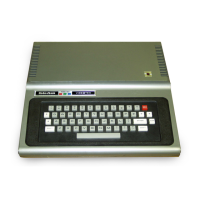Lesson
#2
Saving Programs
In this lesson you will learn how
to
save programs in memory and on cassette tapes.
You will
IJ.lso
learn how to recall a program from storage and how to merge a stored
program with another program.
Experiment
#1
Saving a Program In
RAM
As
it was mentioned before, the Model 100 can hold several files, many
9f
which can
be
program files, In Lesson 1 you learned to write simple BASIC programs
in
the
BASIC system
of
the Computer. When you have written a program that you intend to
use repeatedly, it is a good idea
to
save it in memory (also known
as
RAM, for
Random Access Memory). When you save a program in RAM, in effect, you create a
program file.
The following program serves to demonstrate how any program can be saved in RAM:
10 PRINT "THIS
IS
A TEST"
20 PRINT
"OF
THE
MODEL
100
COMPUTER"
Access BASIC. Clear working memory with the NEW command and then type the
program
as
it
appears above.
Execute the program, The following will be displayed:
THIS
1::'1
A TEf3'T
OF
THE
MODEL
100
COMPUTER
Uk
II
The first step for saving a program in RAM
is
to decide upon a filename. This
filename appears listed as a file in the Main Menu and it serves to identify the
program. Filenames cannot exceed six characters in length.
You may use any combination
of
letters and digits for a filename. However, the first
character in a filename must always be a letter. The following are examples
of
valid
filenames:
MYPROG
SKETCH
ACCNT2
15

